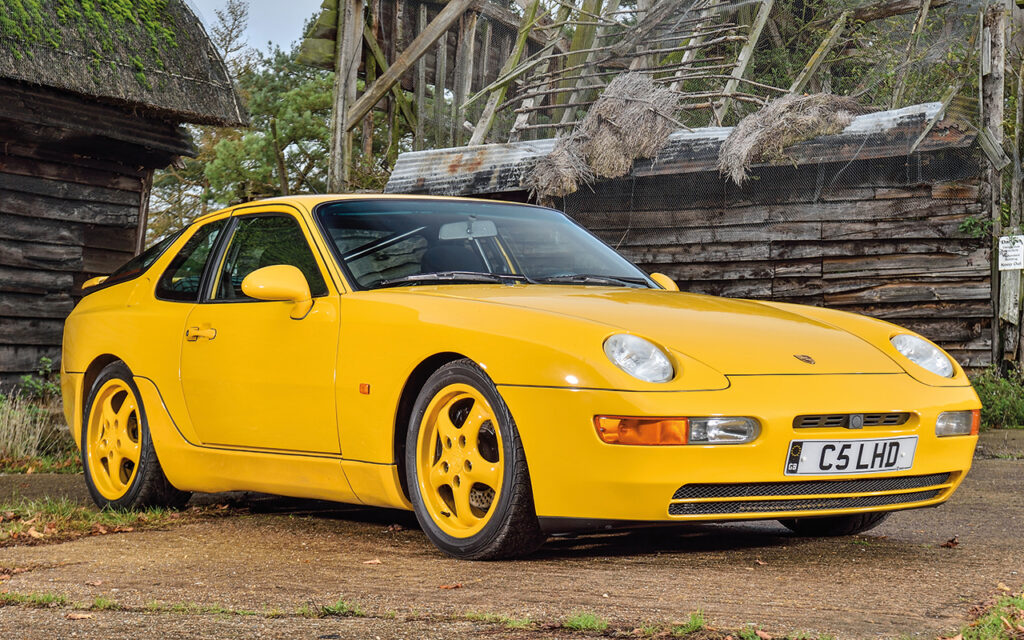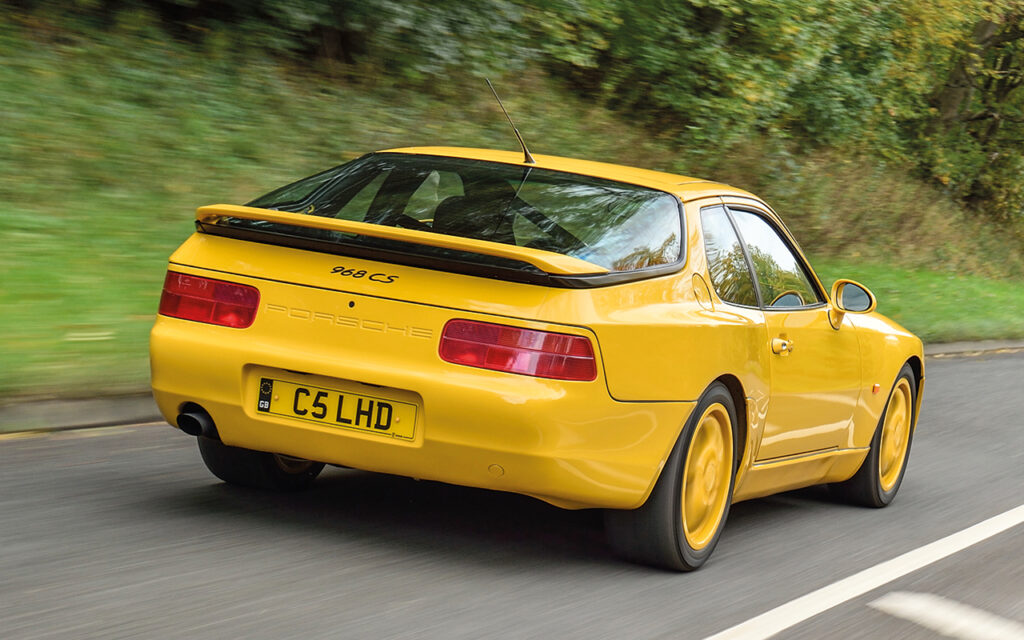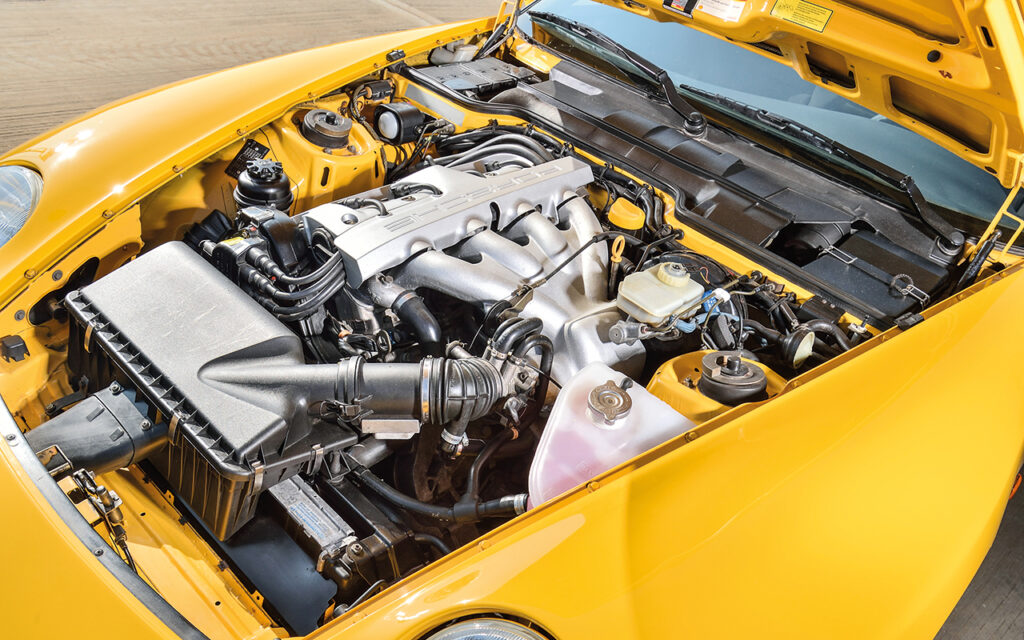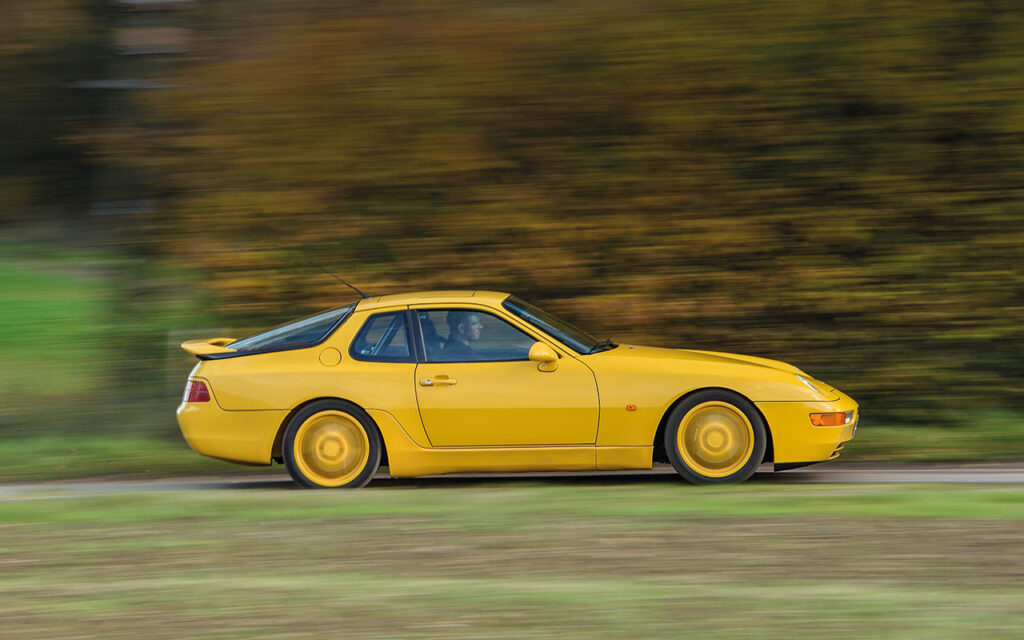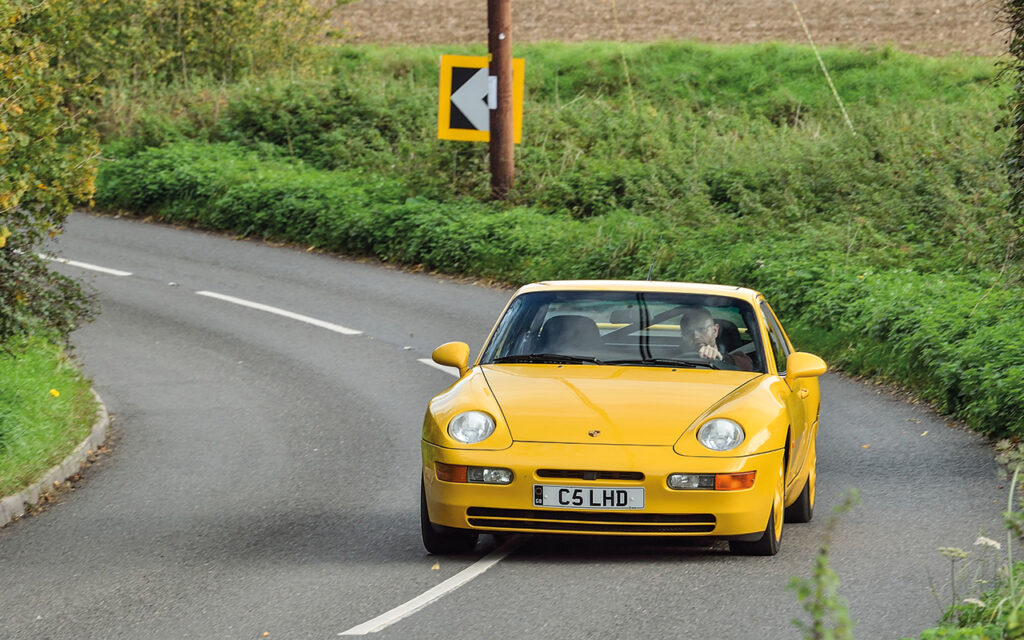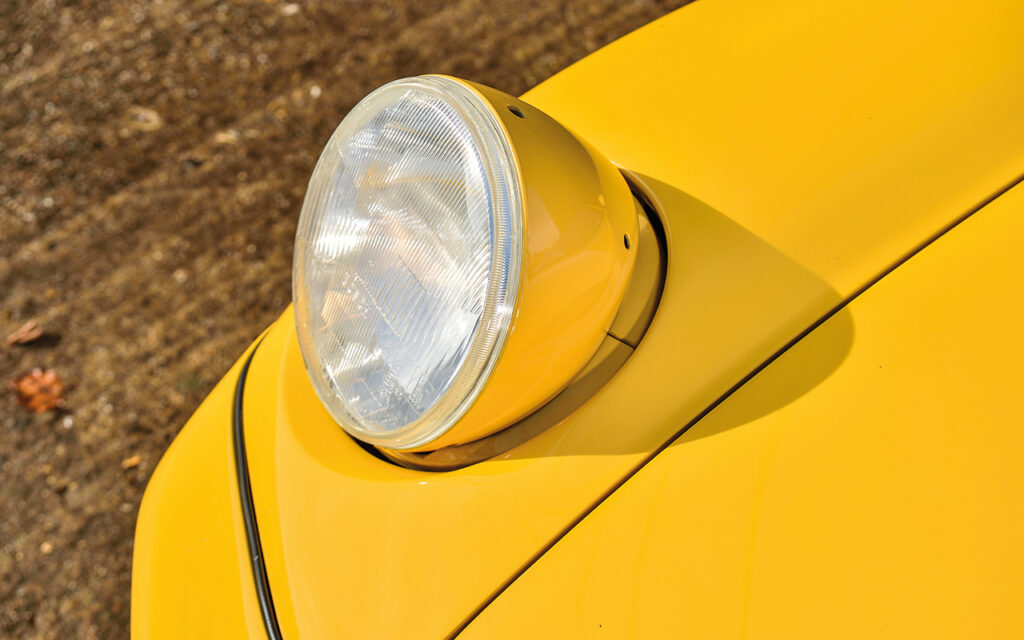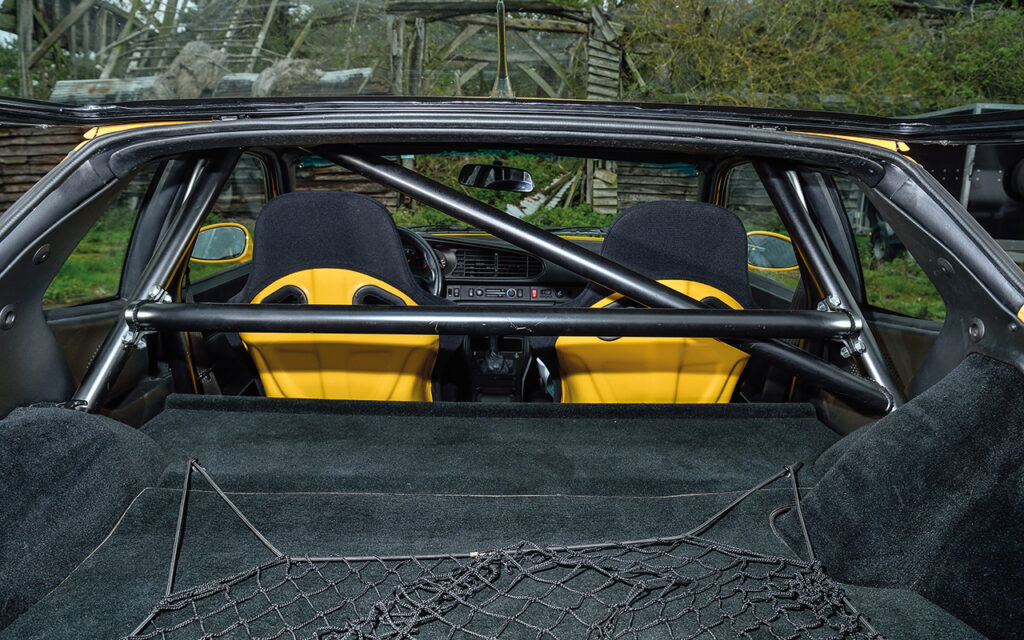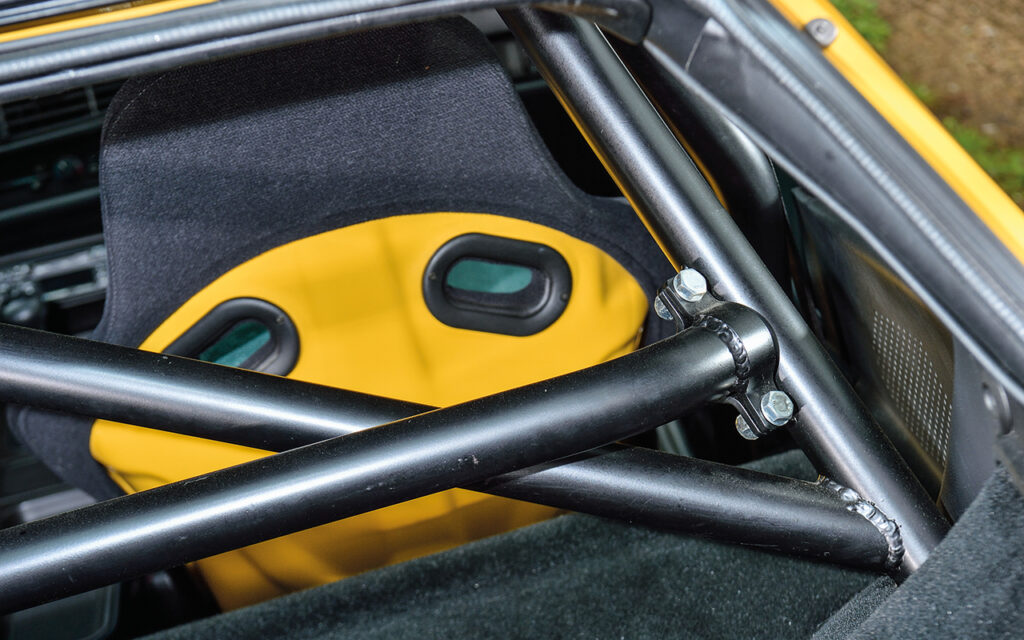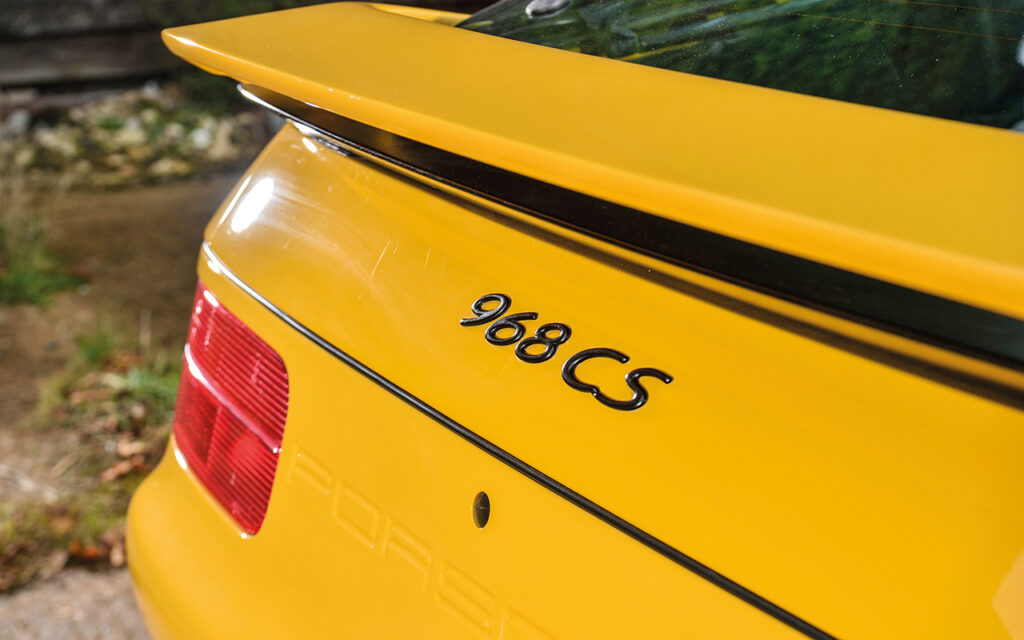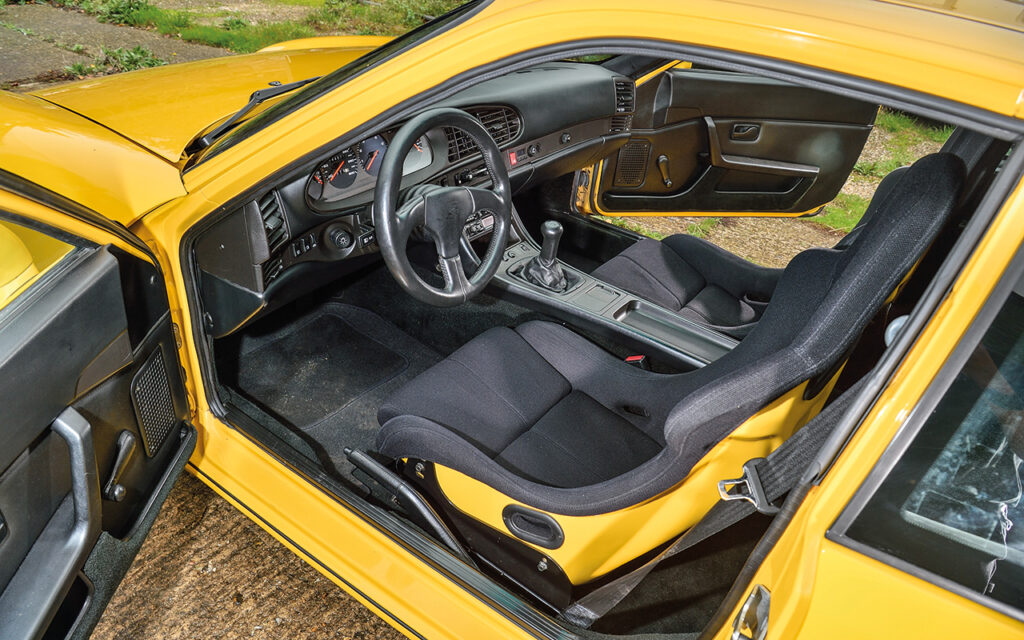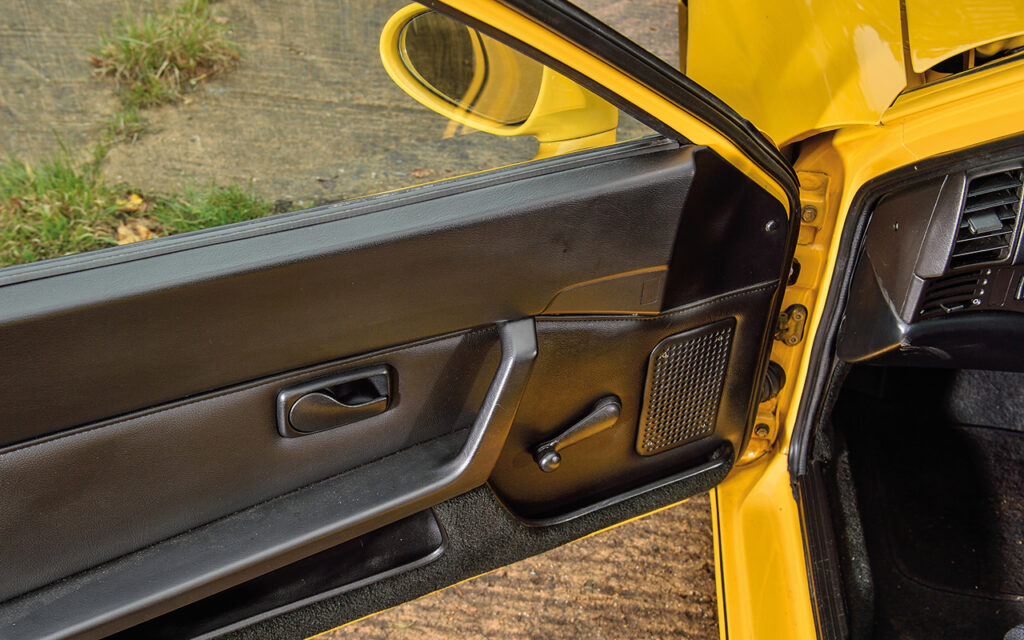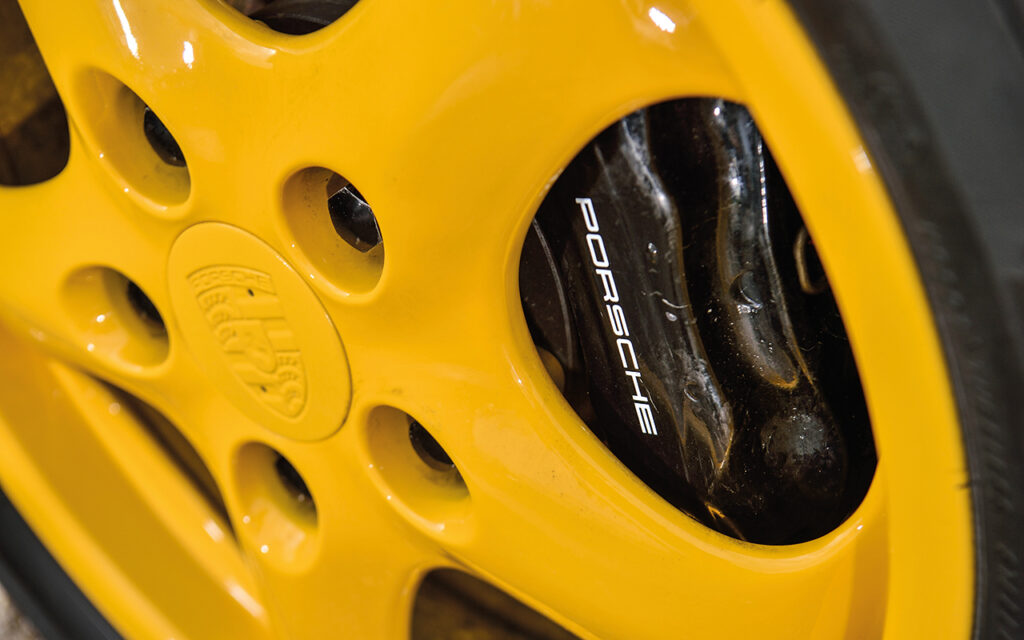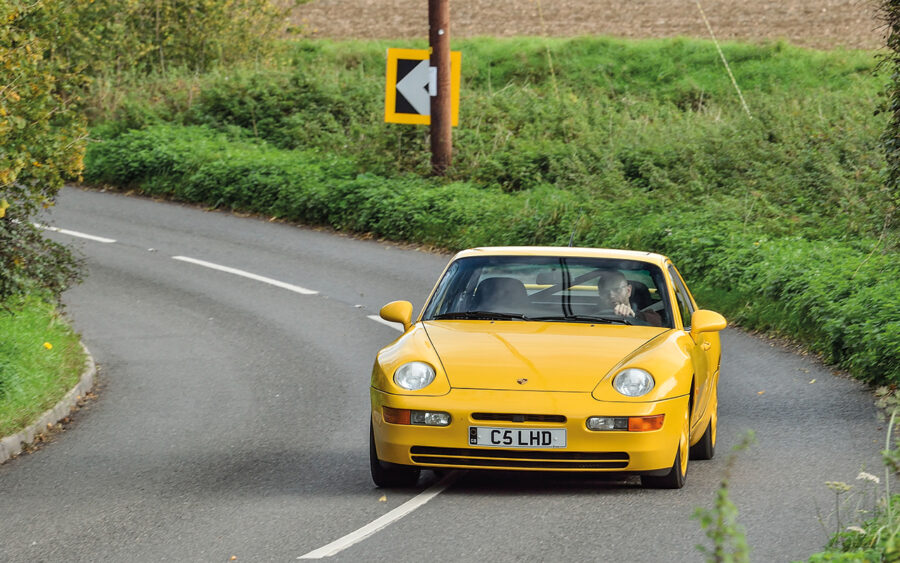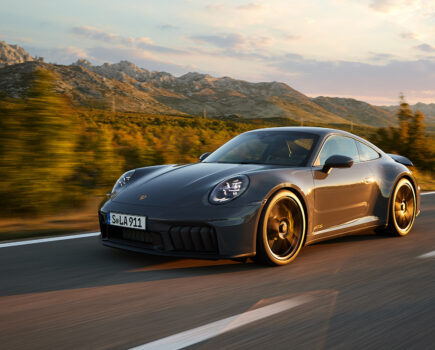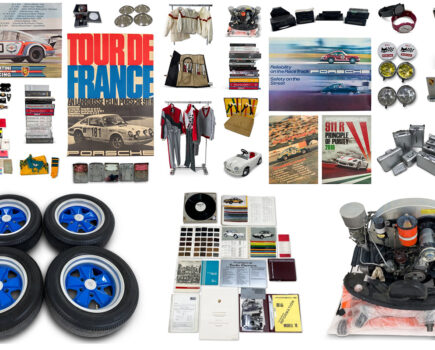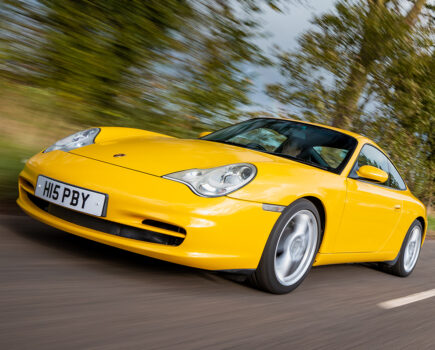A track-ready lightweight special with serious performance, the 968 Club Sport is an oft-overlooked gem of the transaxle era
Words: Emma Woodcock
Simplify, then add lightness. Dr. Ing. Porsche didn’t coin the phrase – you can thank Lotus founder and passionate racer Colin Chapman for the aphorism – but Stuttgart performance cars never stray too far from the concept. A GT3 tips the scales at less than a Carrera, while a GT3 RS makes extreme sacrifices to shed even more kilos. Carbon-fibre, aluminium, polycarbonate. Porsche knows that less weight equals more driving enjoyment and better handling. Apply the idea to the supremely balanced chassis found in the manufacturer’s four-cylinder transaxle family of cars and you get one of the best driver’s Porsches ever built. You get the 968 Club Sport.
The beauty of the Club Sport is in its straightforwardness. Instead of chasing headline figures or refining up-to-the-minute motorsport technology, Porsche retained the same 236bhp three-litre water-cooled inline-four as the basic 968 and improved performance by simply throwing components away. Rear seats, the luggage compartment cover, the rear wiper, the centre console storage cubby lid and the cassette tape holder are all junked during the Club Sport transformation, as are bundles of interior sound deadening, creating a car that’s somewhat compromised in daily use, but more driver-focused than ever before.
Other high-tech components are swapped for simpler alternatives wherever possible, Porsche shedding the pounds by any means necessary. Electric windows are swapped for old-school crank handles that spin in 944 S2 door cards – the Club Sport does without the stitched detailing and integrated pockets of other 968s – and the wing mirrors are shorn of their electrics. The Club Sport also does without central locking, automatic heat control and an alarm, though an immobiliser is still fitted. In-car entertainment is shrunk down to two speakers, plus the standard 968 battery and alternator are swapped for lighter, lower output items.
Drop through the door and you notice two even more extreme changes, the Club Sport welcoming you with a driving position that’s all action. The standard 1993-onwards four-spoke steering wheel and its ungainly airbag are gone, replaced by an unadorned three-spoke with a usefully thicker rim. You’re clamped firmly in position too, sitting low in a fixed-back Recaro bucket seat. It’s a striking contrast to the electrically adjustable leather items fitted to ordinary 968s. Trimmed in cloth and built around a fibreglass shell that could be coloured to match the exterior paintwork (should original buyers have picked the option), Club Sport seats are the clearest hint yet that this Porsche is ready to race. An LCD clock with integrated lap timer confirms it.
The changes might sound modest, but the little things all add up. Resist the call of the options list — air conditioning, a sunroof and the standard leather seats could all be specified — and the Club Sport weighs in at 1,320kg, which is a useful fifty kilos lighter than a standard 968. Moreover, take a base model 968, choose Tiptronic transmission, plump for the open-top Cabriolet or specify weighty extras and the gap can grow to well over 100kg. That’s the kind of difference you can feel everywhere, from accelerating to braking to cornering.
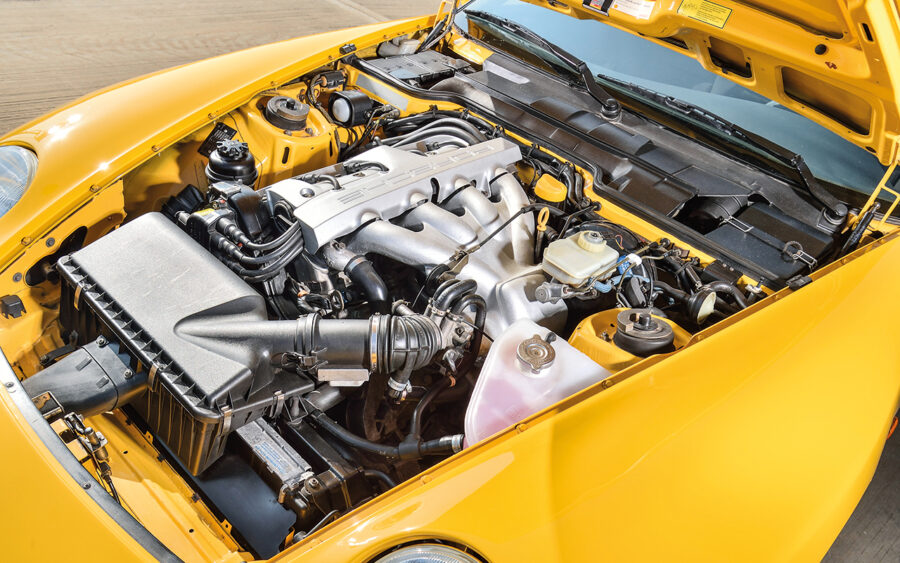
Twist the key and the Club Sport fires with the same gravelly blare as any other 968. There are, after all, no changes to the inline-four, though the lightweight model does without cosmetic engine bay trim and an under-bonnet light, all in the interests of further reducing bulk. Porsche had good reason to maintain consistency: equipped with extensive detail revisions and the first implementation of the VarioCam variable valve timing system, the M44.43 fitted to the 968 was already a long way from its much earlier roots and offered more than 80bhp per litre.
In other words, the 968’s three-litre engine offers a higher specific output than the air-cooled flat-six powering the contemporary 964 Carrera 2. Try the major controls and you’ll be struck by similarities with the more luxurious base car. Gear selection is by the same six-speed manual transaxle — the optional four-speed Tiptronic automatic wasn’t offered on the Club Sport and, if we’re being completely honest, isn’t really technology you’d want on any Porsche of this age anyway — and is coupled to the same single-plate clutch and dual-mass flywheel for easy road driving. The ABS-assisted disc brakes are another carry over, while the uprated three-spoke operates a rack and pinion with the same ratio and hydraulic power assistance as any other 968.
Even the least sporting 968 variants are recognised for their neutral, faithful and consistent handling, which is why it’s no surprise the Club Sport retains much of the same suspension. MacPherson struts and lower wishbones offer an immediate response at the front, while semi-trailing arms provide an obedient, forgiving rear end. Twin anti-roll bars (measuring 26.8mm up-front and 16mm behind) are standard and complete the platform. So far, so similar. The Club Sport builds on this base with shorter front coil springs and appropriately indexed torsion bars dropping the ride height by 20mm.
Sharper suspension is matched by subtly upsized wheels. The five-spoke Cup alloys look near-identical to items fitted to lesser 968s, but they’re a full inch taller and slightly wider to boot, measuring 7.5×17 inches on the front axle and 9×17 at the rear, wearing 225 and 255-profile tyres respectively. Customers could have the lightweight rims colour-coded to the host 968’s body, too. Combined with the slimmed down weight, the running gear changes serve to create a sensational driver’s car.
Journalists first slipped behind the wheel in mid-1993 and the Club Sport didn’t waste a second in winning them over. Performance Car named it their Car of the Year, Autocar decreed the CS Britain’s Best Driver’s Car and Motorsport magazine — until then, fierce critics of the 968 — concluded the Club Sport was “pure driving delight”. Even two-time World Rally Championship victor, Walter Röhrl, was impressed, calling the 968 Club Sport the greatest handling Porsche of all-time and one of the best Stuttgart-crested sports cars he’d ever driven.
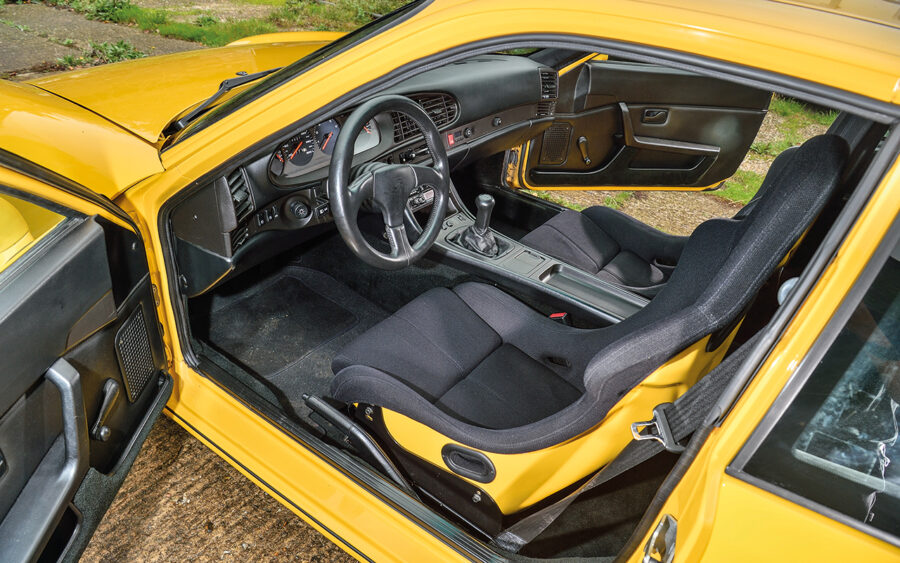
Porsche 968 Clubsport: on the road
Today, the driving experience lives up to the accolades and then some. Rawer and louder than the standard car, but no less balanced or progressive, the Club Sport lets the driver play hero at every opportunity. Copious feedback floods through the steering wheel and the chassis, so you always understand what the car is doing, allowing you to feel ever more confident placing it on the road. The ride might be firm, but there’s grip to spare and, though six seconds to 60mph isn’t quick by current standards, the three-litre four puts down its power with a crescendo 924s and 944s simply can’t match, topping out at 162mph.
Enthusiastic drivers will find lots to love and even more to explore — the 968 Club Sport quickly established a cult following. In fact, Club Sports make up fifteen percent of total 968 production, with 1,923 units built during a three-year production run. British buyers soon began importing European cars to bolster the 179 right-hand drive examples sold new in the UK. The Speed Yellow machine in our photos is one such example. After an early career in Zuffenhausen as a Porsche factory car, this 1994 Club Sport entered private ownership in 1996 and rolled onto English soil two years later.
Fitted with the optional sunroof and Blaunpunkt stereo, but bereft of the side decals that were standard on UK cars, this German-market 968 nevertheless sticks close to the Club Sport ideal and soon found a roster of enthusiastic British owners. Amongst them was Steve Bennett, a previous editor of 911 & Porsche World who kept the car alongside his Carrera 3.2 for a period in the mid-2000s. Values were at their lowest around this period – some Club Sports sold for as little as £10k! Then, as the model gained a reputation as an affordable icon, many owners started customising their 968s to be even better suited to fast road and track driving.
The next owner of this 968 did just that. Working with Steve Bull Specialist Cars, he installed a rear half-rollcage and seat harnesses, fitted an alarm and enhanced handling through the appointment of a Quaife ATB limited-slip differential. Improving traction and letting the driver exploit the Club Sport’s tail-led limit handling to full effect, the Quaife kit is the perfect modern substitute for the £892 TorSen differential Porsche offered on the factory options list.
An evocation of the desirable Porsche M030 package was also fitted during this period. Available as a cost option for all 968s, the bundle further enhances limit handling with revised suspension and larger brakes. This particular Club Sport features the calipers and 304mm discs from the M030 package, as well as the uprated 30mm front and 19mm rear anti-roll bars, but omits the M030’s firmer springs and Koni shock absorbers in favour of KW coilovers at each corner. Equipped with adjustable height, compression and rebound damping, they further enhance an already boutique driving experience. Indeed, you can absolutely throw the car into corners, assured by its superior handling abilities.
This Club Sport clings to the road, encouraging extra confidence in corners during pedal press and the subsequent release of more power from the torquey sixteen-valve lump at the nose. The 968 Club Sport might not have been billed as a ‘race car for the road’ by Porsche, but with the suspension and transmission upgrades this particular example benefits from, it’s difficult to argue against the suggestion — there’s enough comfort to make normal driving pleasurable, but a huge amount of bite ready to be released for spirited sprints, tight twisties and trackdays.
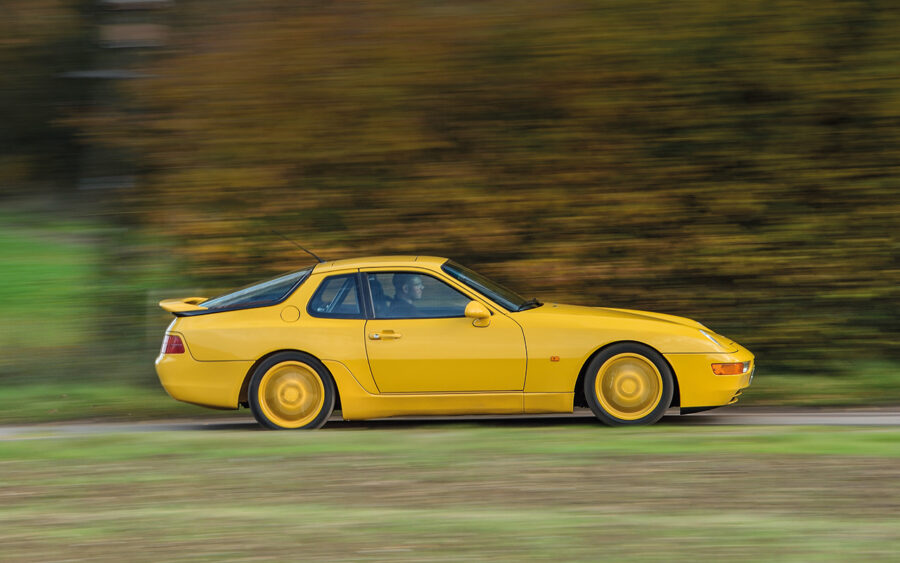
More recently, this bright and boisterous Porsche has benefited from a 150-hour recommissioning at Suffolk-based marque specialist, PIE Performance. Led by PIE founder and three-time Club Sport owner, Chris Lansbury, the team rebuilt the car into box-fresh condition while retaining most of its original components. Workshop time included a full service and inspection of the camshaft teeth, brake calipers, torsion bar mounts and VarioCam system, while Chris cleaned out the inlet manifold, throttle body and fuel injectors to enable optimum performance. New fluids, brake pads and rear caliper plates brought the 968 back to perfect condition, while refreshed anti-roll bar mounts and four-wheel alignment ensure the handling is as sharp as ever.
Chris’ crew has worked hard to get this 968 looking exactly right, too. The Cup five-spokes, which had been resprayed in a dark anthracite shade, are now refinished in their original Speed Yellow. Chris even tracked down and fitted an original Club Sport clock. To ensure the correct panel gaps and to make sure the car is cosmetically pristine, PIE also repainted, resealed and refitted the side skirts, as well as taking time to rehang the front and rear bumpers. Ask Chris about the hardest job, though, and he’ll point to the rear hatch, a notorious trouble spot for all 924s, 944s and 968s — it took a full day to adjust and rehang the car’s rear screen.
The travails of 2020 meant this stunning Club Sport had to be sold as soon as the work was completed. Silverstone Auctions handled the sale at the recent NEC Classic Live Online Auction, with the gavel falling on this mint example at £41,063. The price would have been unimaginable just a few years ago, but today, even high-mileage, unrestored 968 Club Sports make more than £27,000. That said, look at what you’re getting and it all begins to make sense. The 968 Club Sport is a lightweight, track-ready rarity with exceptional handling, all for the price of a ropey 911 SC. It’s as simple as that.
